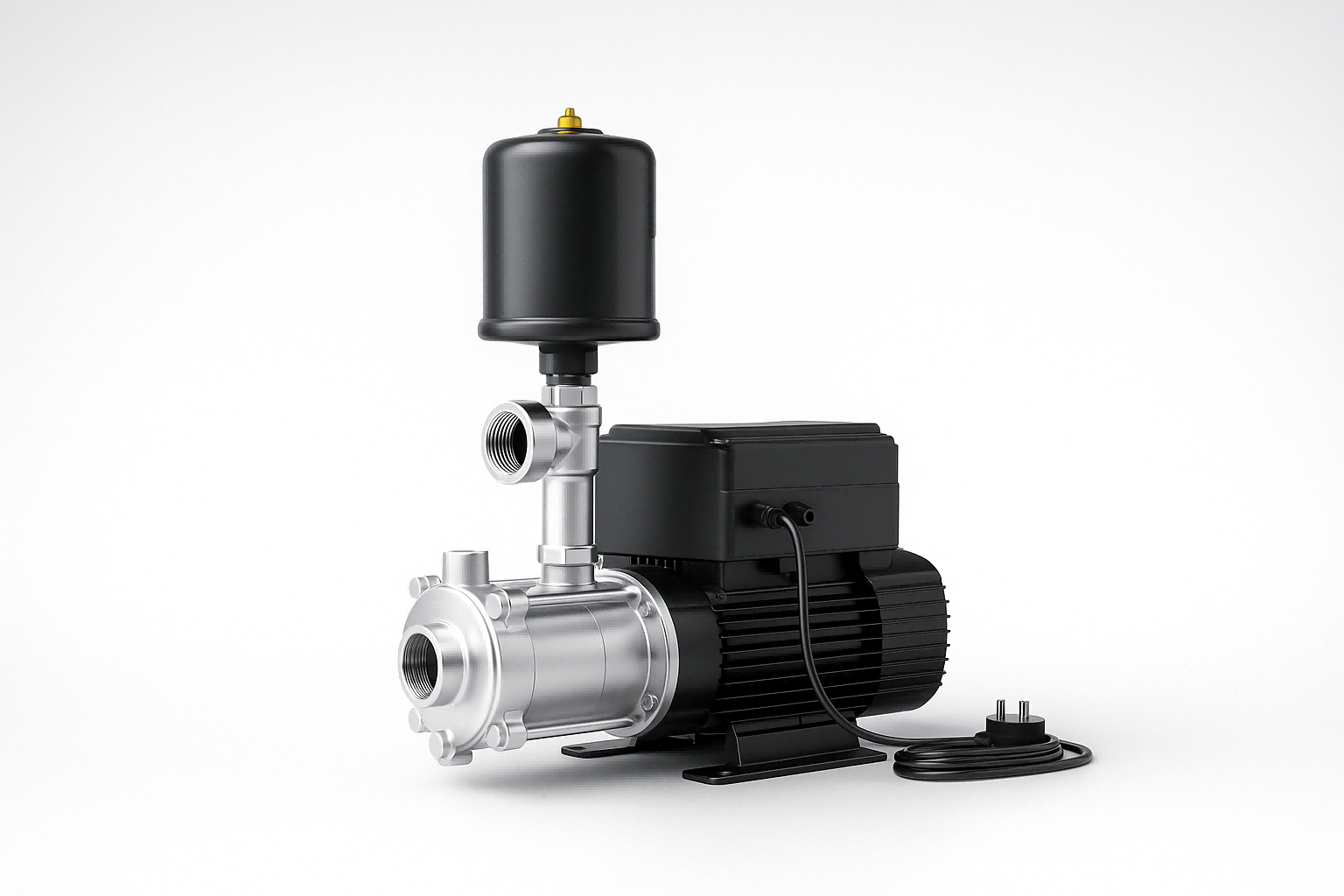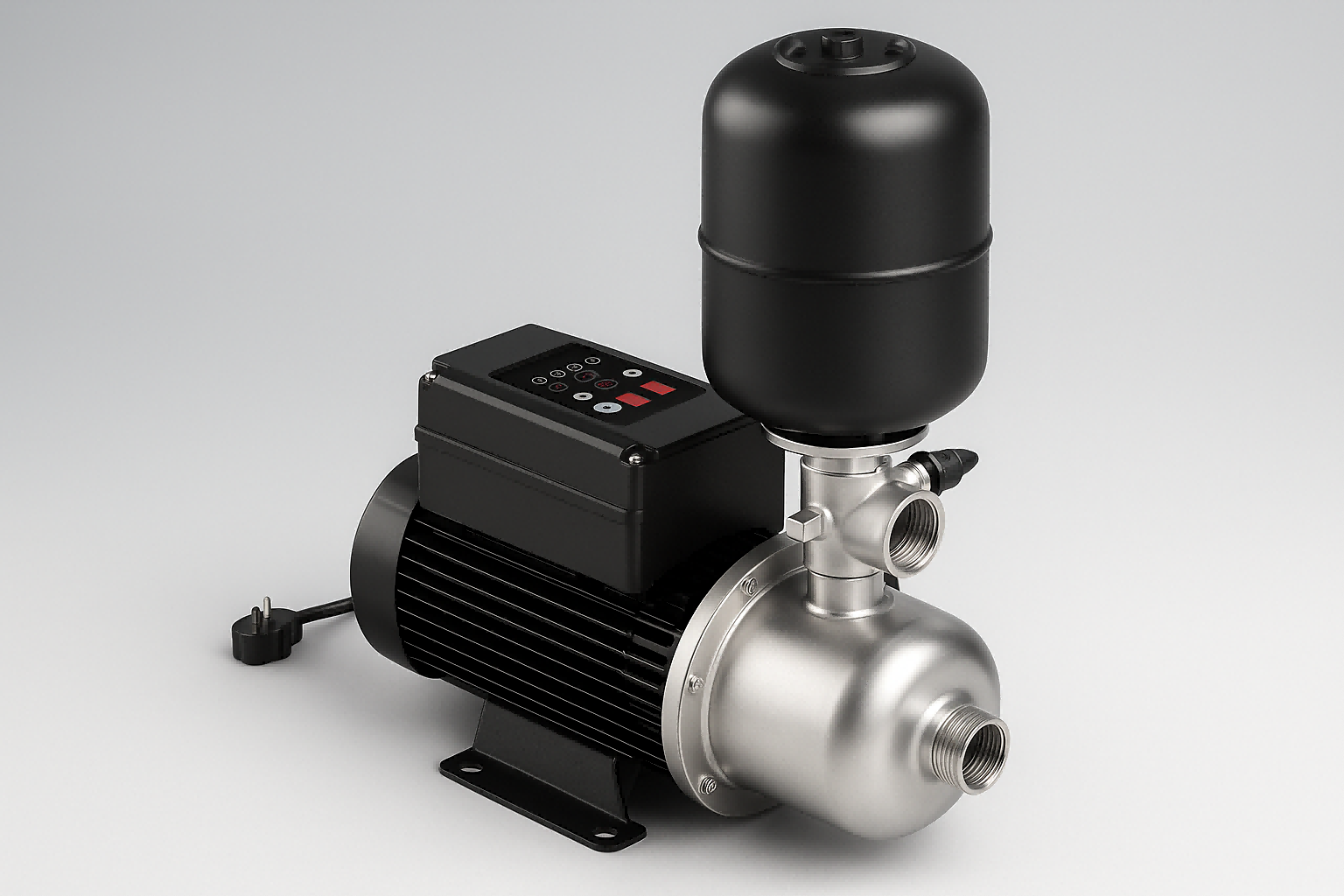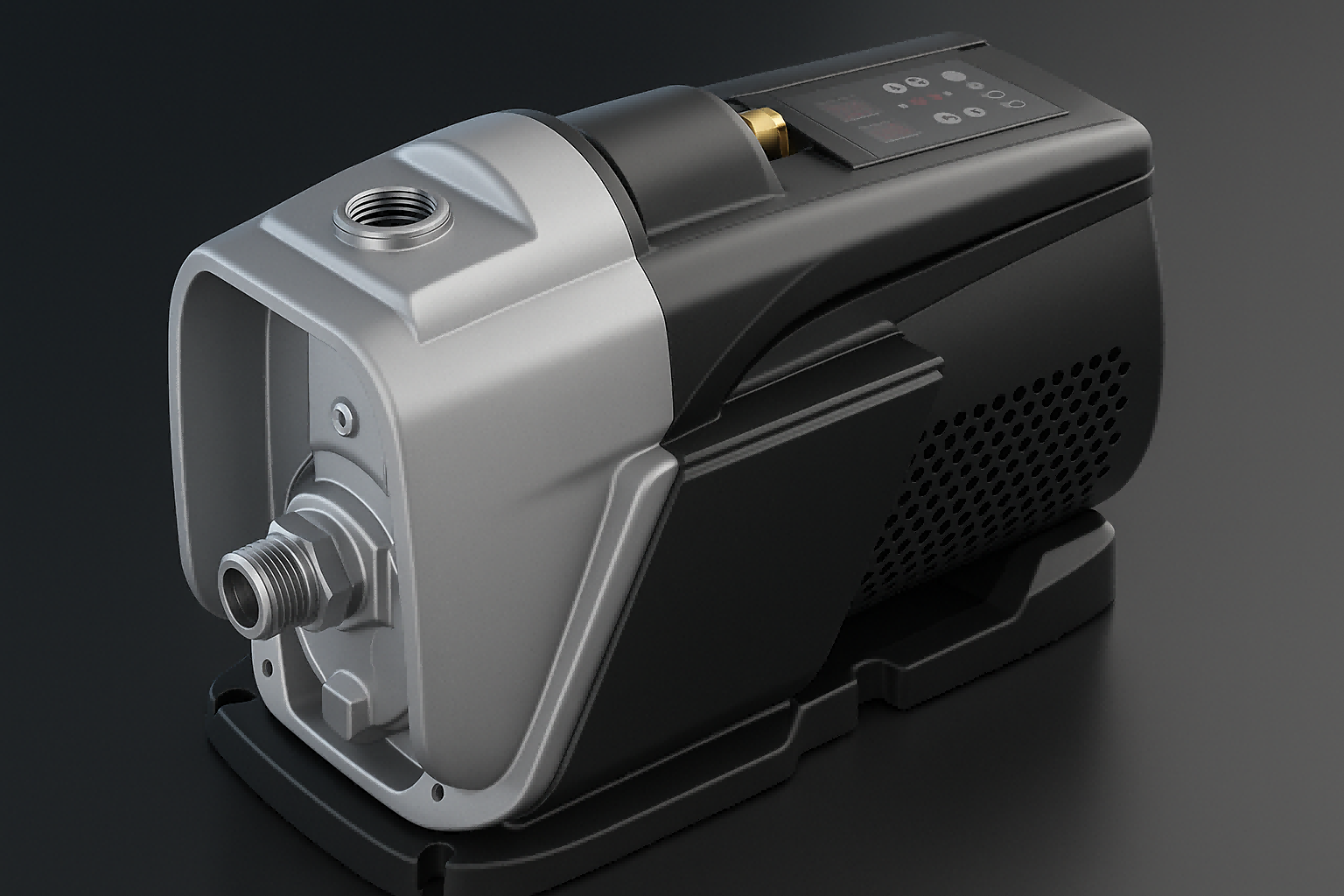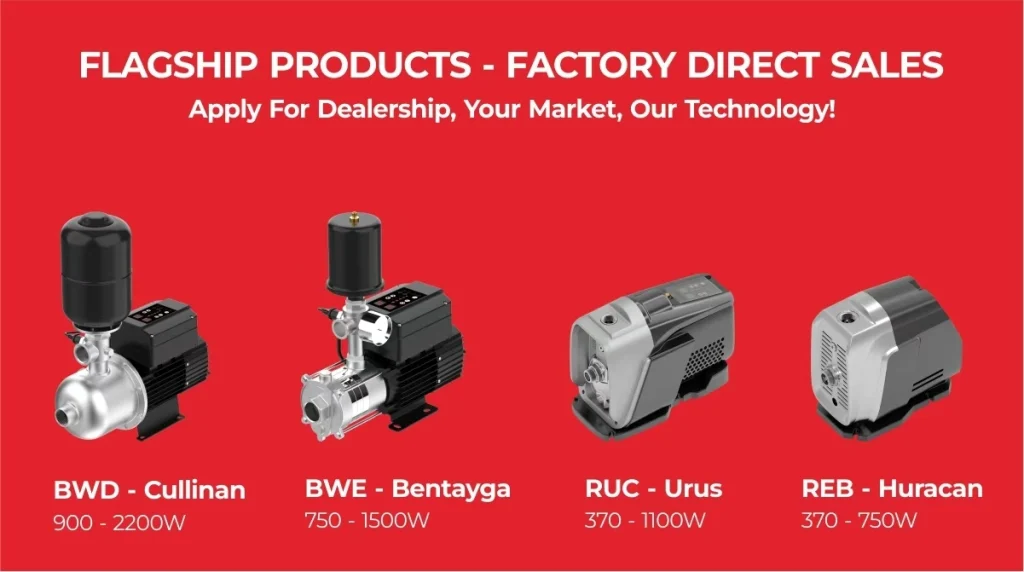Is your water pressure unreliable?
Are you frustrated by noisy pumps and high energy bills?
Choosing the right well pump is key to a consistent, efficient water supply.
Selecting the perfect well pump requires matching the pump type to your well's depth, determining the correct size for your home's water demand, and considering advanced features for efficiency and longevity. This ensures a reliable, quiet, and cost-effective water system.
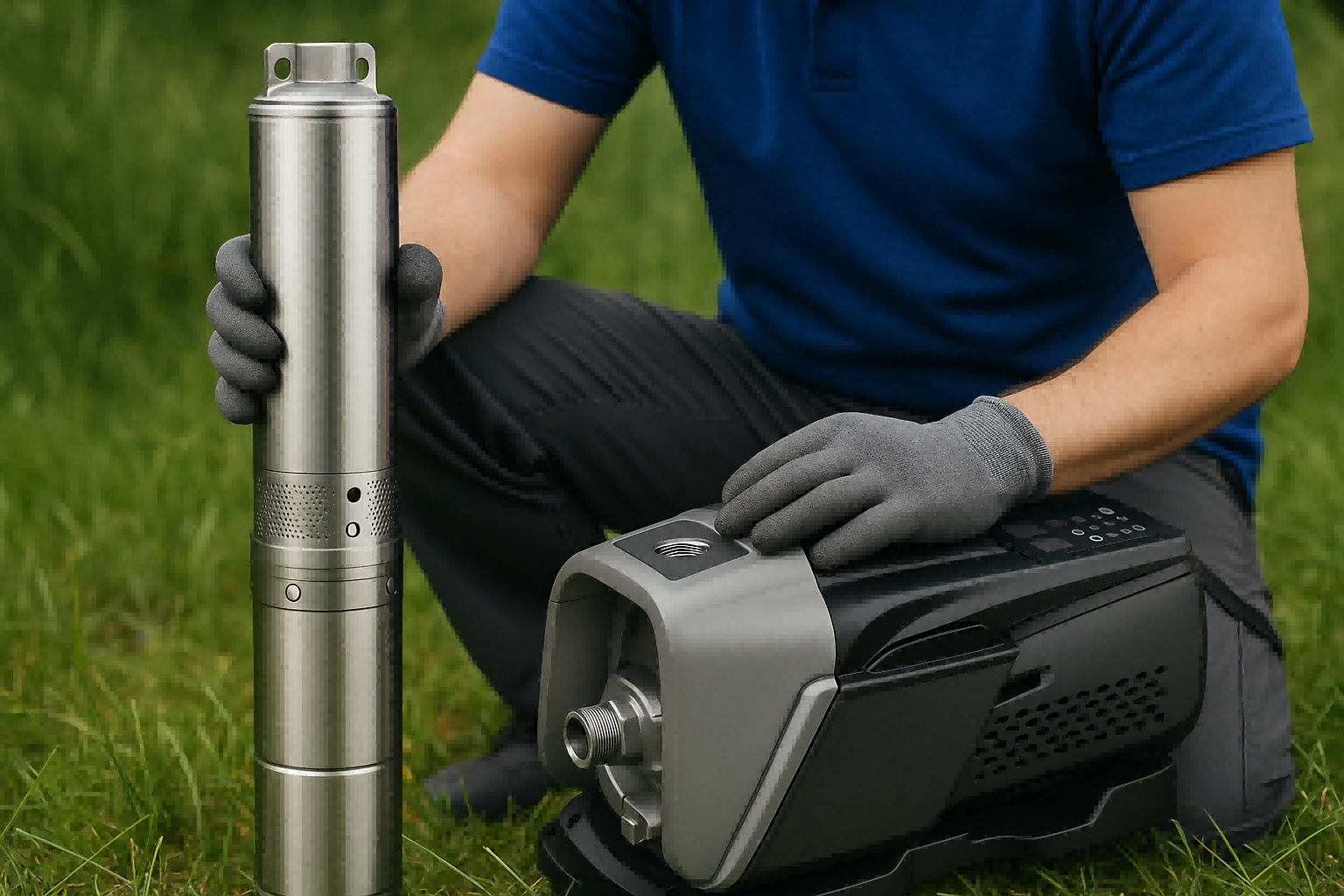
Choosing a new water well pump can feel overwhelming.
You need to think about your well's specific characteristics, your household's daily water usage, and the technology inside the pump itself.
This guide will walk you through the essential factors, breaking down the technical details into simple, clear steps.
We will help you understand the different types of pumps available and what key features to look for.
Our goal is to equip you with the knowledge to make an informed decision, ensuring your investment provides dependable water for years to come.
How Does a Well Pump Work?
Are you unsure about what happens underground to bring water to your tap?
A pump not working correctly can lead to no water, low pressure, and costly damage.
A well pump is the core of your water system. It lifts water from an underground well and moves it to a storage tank. The tank pressurizes the water, delivering it on-demand to your home's taps and appliances.
Understanding the basic function of a well pump system is the first step toward selecting the right one.
Most modern systems are electromechanical, using an electric motor to power the pump.
When you turn on a faucet, the pressure in the system drops.
This drop signals a pressure switch to turn on the pump.
The pump then draws water from the well and sends it to a pressure tank.
Inside the tank, compressed air pushes down on the water, maintaining a steady pressure throughout your home's plumbing.
Once the pressure in the tank reaches a preset maximum level, the switch turns the pump off until it's needed again.
This cycle is fundamental to how you get water.
Key Functional Components
A typical well pump system consists of several crucial parts working together.
- The Pump & Motor: This is the unit that does the actual work of moving water. It can be located above ground or submerged in the well.
- The Pressure Tank: A tank containing an air bladder that becomes compressed as water is pumped in. It stores pressurized water, reducing how often the pump needs to run and preventing water hammer.
- The Pressure Switch: This device monitors the water pressure in the tank. It controls the pump, turning it on when pressure is low and off when it's high.
- The Check Valve: A one-way valve that prevents water from flowing back down into the well after the pump turns off.
The Role of Modern Technology
Modern pumps have evolved significantly.
Advanced systems now integrate smart technology for better performance and efficiency.
For example, pumps with a Variable Frequency Drive (VFD) don't just switch on and off.
Instead, the VFD adjusts the motor's speed in real-time based on water demand.
If you only open one faucet, the pump runs slowly.
If you use multiple fixtures, it speeds up.
This provides two major benefits.
First, it delivers a perfectly constant water pressure, eliminating the fluctuations common with traditional systems.
Second, by running the motor only as fast as needed, it dramatically reduces energy consumption.
These smart pumps often use highly efficient Permanent Magnet Synchronous Motors (PMSM), which further reduce electricity use and operate almost silently.
They represent a significant leap forward in well pump technology.
Types of Water Well Pumps
Confused by terms like "jet pump" and "submersible"?
Choosing the wrong type for your well's depth can lead to poor performance, pump burnout, or a complete lack of water.
The two primary types of well pumps are jet pumps and submersible pumps. Jet pumps pull water from shallow wells (less than 25 feet), while submersible pumps push water up from deep wells (up to 400 feet or more).
The most critical factor in choosing between a jet pump and a submersible pump is the depth of your well.
Pushing water from below requires less energy than pulling it from above.
This simple principle of physics is why the pump type must match your well's characteristics.
First, you need to determine if you have a shallow or deep well.
A well less than 25 feet deep is considered shallow.
Anything deeper requires a deep-well pump solution.
You can find this information on the well driller's report for your property.
Shallow Well Jet Pumps
Shallow well jet pumps are mounted above ground, typically in a pump house or basement.
They use a single pipe to draw water up from the well through suction.
Because they are lifting water against gravity, their effective limit is around 25 feet of depth.
- How They Work: A shallow well jet pump creates suction using a component called a jet, which is located in the pump housing. An impeller moves water through a narrow orifice, creating a vacuum that pulls more water up from the well.
- Advantages: They are easily accessible for maintenance and repairs since they are located above ground. They are also generally less expensive upfront.
- Disadvantages: They are limited by depth and can be noisy. They also need to be "primed" (filled with water) before their first use and can lose their prime if there are any air leaks.
Deep Well Pumps: Jet vs. Submersible
For wells deeper than 25 feet, you have two main options.
| Pump Type | Depth Range | Location | Operation | Efficiency |
|---|---|---|---|---|
| Deep Well Jet Pump | 25 – 110 feet | Above Ground | Pulls water using two pipes | Less efficient at greater depths |
| Submersible Pump | 25 – 400+ feet | Inside the Well Casing | Pushes water up with one pipe | More efficient for deep wells |
Deep Well Jet Pumps
A deep well jet pump also sits above ground but uses two pipes instead of one.
One pipe pushes water down to the jet assembly located deep in the well.
The second pipe then brings a mixture of this drive water and new well water back up to the surface.
This two-pipe system allows it to pull water from depths up to about 110 feet.
Submersible Pumps
Submersible pumps are the most common choice for deep private wells today.
The entire unit—a sealed motor connected to the bottom of a pump—is lowered into the well and submerged in water.
- How They Work: When activated, the motor drives a series of impellers. Each impeller in the stack pushes water up to the next one, building pressure until the water is forced up a single pipe to the surface.
- Advantages: They are highly efficient because pushing water is easier than pulling it. They are very quiet since they operate deep underground. They don't need priming and are less prone to cavitation (air bubbles that can damage the pump).
- Disadvantages: Repairs require pulling the entire unit out of the well casing, which can be a complex and expensive job. However, modern submersible pumps are known for their exceptional reliability, often lasting for 15-25 years without service.
What Size Well Pump Do I Need?
Worried about choosing a pump that's too weak or too powerful?
An undersized pump results in weak water pressure, while an oversized pump wastes energy, cycles frequently, and wears out prematurely.
To size a pump, calculate your home's peak water demand in gallons per minute (GPM). A typical 3-4 bedroom home requires 8-12 GPM. Add 1 GPM for every water-using fixture, then match this to a pump's flow rate.
Selecting the right size pump, or its capacity, is just as important as choosing the right type.
The pump's capacity is measured in both GPM (gallons per minute) of flow and horsepower (HP) of the motor.
A properly sized pump will meet your household's needs without being overworked or inefficient.
You need to balance flow rate with the pressure required to lift water and supply it to your home.
Calculating Your Required Flow Rate (GPM)
Your first step is to estimate your home's peak water demand.
This is the maximum amount of water you might use at one time.
A simple way to do this is to count the number of water fixtures in your home and assign 1 GPM to each.
Consider all fixtures, including:
- Kitchen and bathroom faucets
- Showers and bathtubs
- Toilets
- Dishwashers
- Clothes washers
- Refrigerators with ice/water dispensers
- Outdoor spigots
- Irrigation systems
For example, a home with two bathrooms, a kitchen, a laundry room, and an outdoor hose bib might have 8-10 fixtures.
This would suggest a required flow rate of 8-12 GPM to comfortably supply the home during peak use.
It's better to slightly overestimate than to underestimate your needs.
Understanding Horsepower (HP)
Horsepower is a measure of the motor's power.
More horsepower is needed to lift water from greater depths and to push it against higher pressure.
If you are replacing an existing pump, a good starting point is to choose a new unit with the same horsepower.
However, if you've added new appliances, bathrooms, or family members, you may need to increase the horsepower.
The depth of your well is a major factor.
A pump needs significantly more power to lift water 300 feet than it does to lift it 30 feet.
Always check the manufacturer's performance chart.
This chart shows how many GPM a pump can deliver at different depths (often listed as "total head").
The Danger of Oversizing
It might seem safe to buy a pump that is much larger than you need, but this is a mistake.
An oversized pump will fill the pressure tank very quickly.
This causes the pump to turn on and off frequently, a condition known as "short cycling."
Short cycling puts immense strain on the pump's motor and control switch, drastically shortening their lifespan.
It also wastes a significant amount of electricity, as starting a motor requires a large surge of current.
Pumps equipped with a Variable Frequency Drive (VFD) solve this problem.
A VFD pump can automatically adjust its speed to match demand perfectly, so it doesn't need to short cycle.
Even if the pump is technically oversized, the VFD will simply run it at a very low, efficient speed for small water demands, protecting the motor and saving energy.
Improving Your Well Pump’s Life Expectancy
Are you hoping your new pump will be a long-term investment?
Poor installation, environmental factors, and incorrect usage can cause a high-quality pump to fail years ahead of schedule.
To maximize a pump's lifespan, ensure it's correctly sized for the well's yield, use quality components, and consider a model with built-in protections. Regular professional checkups and a properly sized pressure tank are also crucial for longevity.
A well pump is a significant investment, and you should expect it to last for many years.
A submersible pump can last 15 years or more, while jet pumps typically have a shorter but still substantial lifespan.
However, the operational life of any pump is heavily dependent on several factors.
By understanding and controlling these factors, you can significantly extend the life of your pump.
Critical Factors Affecting Pump Longevity
Several key elements influence how long your pump will last.
- Duty Cycle: A pump that runs constantly or cycles frequently will wear out much faster than one that runs intermittently. Correctly sizing the pump and pressure tank is the best way to ensure an optimal duty cycle.
- Motor Quality: The quality of the motor's bearings, insulation, and cooling design plays a huge role. High-end motors with superior thermal management and premium bearings will outlast standard models.
- Water Quality: Sediment like sand, silt, or grit is highly abrasive. It can quickly wear down a pump's impellers and bearings. If your well produces a lot of sediment, you may need a sediment filter or a pump specifically designed for such conditions.
- Installation Quality: A professional installation is non-negotiable. An expert will ensure the pump's capacity is matched to the well's safe yield, install check valves correctly, and ensure all electrical connections are secure and waterproof.
- Cavitation: This occurs when air gets into the pump. It can cause overheating and severe mechanical damage. Cavitation is often caused by an oversized pump or trying to draw water faster than the well can replenish itself.
The Role of Advanced Pump Protections
Modern, intelligent pumps are designed with longevity in mind.
They incorporate a sophisticated suite of electronic protections that actively safeguard the pump from damaging conditions.
These features are a major leap forward from older, unprotected pumps.
| Protection Type | Function | Benefit |
|---|---|---|
| Dry Run Protection | Senses when there is no water and shuts the pump off. | Prevents the motor from burning out when the well runs dry. |
| Voltage Protection | Monitors incoming electricity and shuts down if voltage is too high or too low. | Protects sensitive electronics from grid fluctuations. |
| Overheating Protection | Uses sensors to monitor the temperature of the motor and control board. | Prevents permanent damage from excessive heat. |
| Antifreeze Protection | Automatically runs the pump for a few seconds in freezing conditions. | Prevents ice from forming and damaging the pump. |
| Leak Detection | Senses very small, continuous water flow and alerts the user. | Helps find and fix costly leaks in the plumbing system. |
Choosing a pump with a comprehensive protection system can prevent the vast majority of common pump failures.
For example, a critical feature is advanced dry-run protection.
When it detects a water shortage, it doesn't just shut off.
It enters a smart recovery mode, periodically attempting to self-prime for a set time before sleeping to conserve energy, then trying again later.
This intelligent approach protects the pump while automatically restoring water as soon as it becomes available.
Similarly, having a fully sealed, waterproof electronics board (with a rating like IP67) completely isolates the controls from moisture and humidity, which are leading causes of electronic failure in pumps.
This feature alone can add years to a pump's operational life.
Conclusion
Choosing the right well pump ensures reliable water access.
By understanding your well's depth, your home's needs, and modern pump features, you can select a system that is efficient, durable, and provides years of excellent service.
FAQs
How long should a well pump last?
A good quality submersible well pump can last 15 to 25 years. Jet pumps, being above ground, typically have a shorter lifespan of around 10 years.
What is the most common cause of well pump failure?
Dry running is a very common cause of failure, where the pump operates without water and overheats. Frequent cycling from an improperly sized pressure tank also causes premature wear.
Is a bigger well pump better?
No, a bigger pump is not better. An oversized pump will short cycle, leading to increased energy use and a significantly shorter lifespan for the motor and controls.
How do I know if my well pump is bad?
Signs of a failing pump include very low water pressure, no water at all, dirty water, or the pump cycling on and off for no reason.
Can a well pump be repaired?
Yes, many components of a well pump system, like the pressure switch or control box, can be repaired. However, if the submersible motor itself fails, it's often more cost-effective to replace the entire pump unit.
How much does it cost to replace a well pump?
The cost varies greatly depending on the pump type, well depth, and labor rates. Replacing a shallow well jet pump is less expensive than replacing a deep-well submersible pump.
What does GPM mean for a well pump?
GPM stands for Gallons Per Minute. It measures the volume of water a pump can move in one minute and is a key factor in sizing the pump for your home's needs.
What is a VFD pump?
A VFD (Variable Frequency Drive) pump is a smart pump that adjusts its motor speed to match water demand. This provides constant pressure, saves energy, and extends the pump's life.



